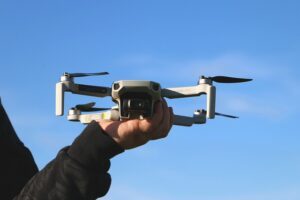 Part of an occasional series, “Things the FAA Wishes More Pilots Knew.” This article explains when you must register your drone – even if it’s a micro model.
Part of an occasional series, “Things the FAA Wishes More Pilots Knew.” This article explains when you must register your drone – even if it’s a micro model.
This fall, DRONELIFE had the privilege of speaking on a panel with representatives from the FAA. After some discussion, we decided to collaborate on a series of articles pointing out some of the most common mistakes and misconceptions about drone regulations. We know that the vast majority of drone pilots make an effort to follow the rules: we’re doing our part by getting the word out on some issues that may be unclear.
Things the FAA Wishes More Pilots Knew: Does a Mavic Mini Need to be Registered?
The answer is: sometimes.
Some of us remember the simple formula that explained the rules about registering your drone when the program was first introduced in 2015: drones that weigh less than 250 grams – about the size of two sticks of butter – don’t require registration. That was five years ago, however, and the drone industry has changed significantly since then. That formula no longer applies across the board since the implementation of Part 107, enabling commercial operations in the U.S.
When the Mavic Mini was introduced as a micro drone last year, DJI – and the media, we’re guilty too – advertised it specifically as falling under the 250 gram limit for drone registration. (Like this article published on DRONELIFE- mea culpa, my friends.) It’s true that if the Mavic Mini or another micro drone is being operated strictly under the exception for recreational operation, it does not need to be registered. The Mavic Mini, however, is a very powerful drone – and it can be, and frequently is, used for commercial purposes or by a Part 107 pilot who wants to operate outside of the strict boundaries of the Exception for Recreational Flyers.
When Your Micro Drone Must Be Registered (Helpful Links Below)
“Most folks don’t realize that all drones, irrespective of weight, must be registered with the FAA if the flight is governed by Part 107 or Part 91,” explains John Meehan, Aviation Safety Analyst with the FAA.
Pilots also may not always realize that their flights do not fall under the Exception for Recreational Flyers. “Flying a sUAS for any purpose other than recreation, or not following an existing aeromodelling organization’s safety guidelines, makes the flight governed by Part 107,” Meehan explains. “Flights flown with a sUAS for a commercial purpose, even if flown at no charge, for example, are governed by Part 107.”
There’s the definitive answer: Any drone operated under Part 107 or Part 91 regulations does need to be registered – no matter how small it is. That includes the Mavic Mini or any other micro drone weighing under 250 grams. The good news is that registering your drones can be done online, takes less than five minutes, and only costs $5.
Here are links to some of the pertinent regulations:
- This page describes the aircraft registration requirements under 14 CFR Part 47.
- This page describes how to operate under Part 107 rules.
- This page describes the Exception for Recreational Flyers.
- For those into the fine print, the law referring to the Exception for Recreational Flyers can be found here (see Section 349.)
- This page is for registering your drone.

Miriam McNabb is the Editor-in-Chief of DRONELIFE and CEO of JobForDrones, a professional drone services marketplace, and a fascinated observer of the emerging drone industry and the regulatory environment for drones. Miriam has penned over 3,000 articles focused on the commercial drone space and is an international speaker and recognized figure in the industry. Miriam has a degree from the University of Chicago and over 20 years of experience in high tech sales and marketing for new technologies.
For drone industry consulting or writing, Email Miriam.
TWITTER:@spaldingbarker
Subscribe to DroneLife here.







[…] source […]